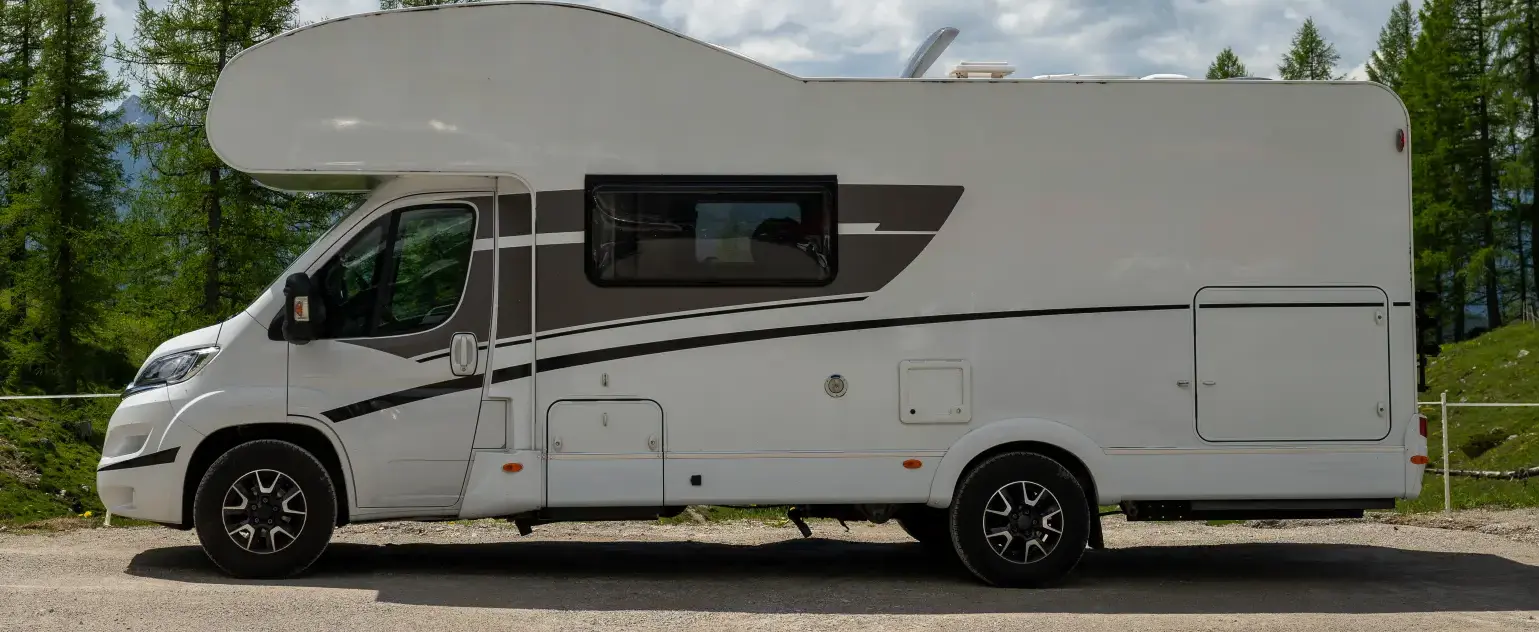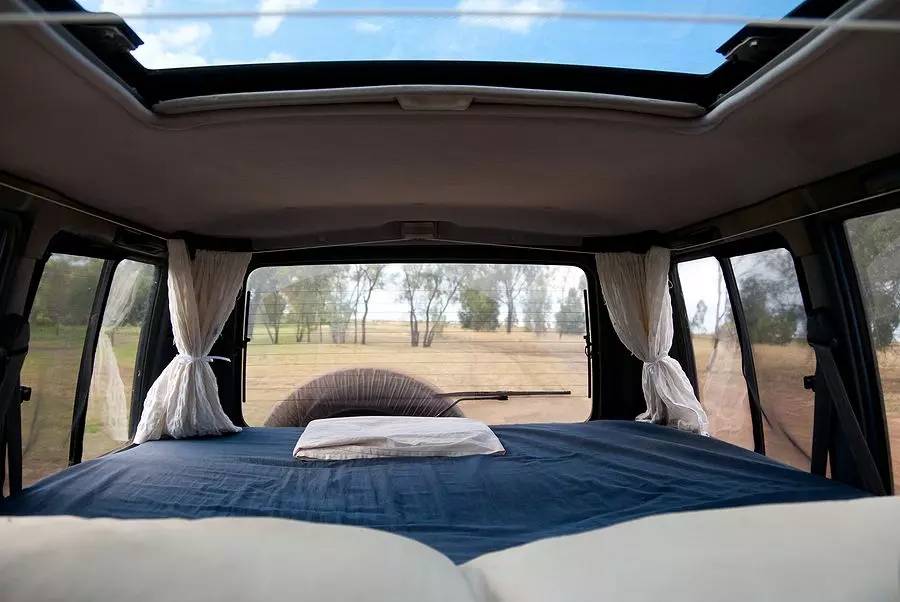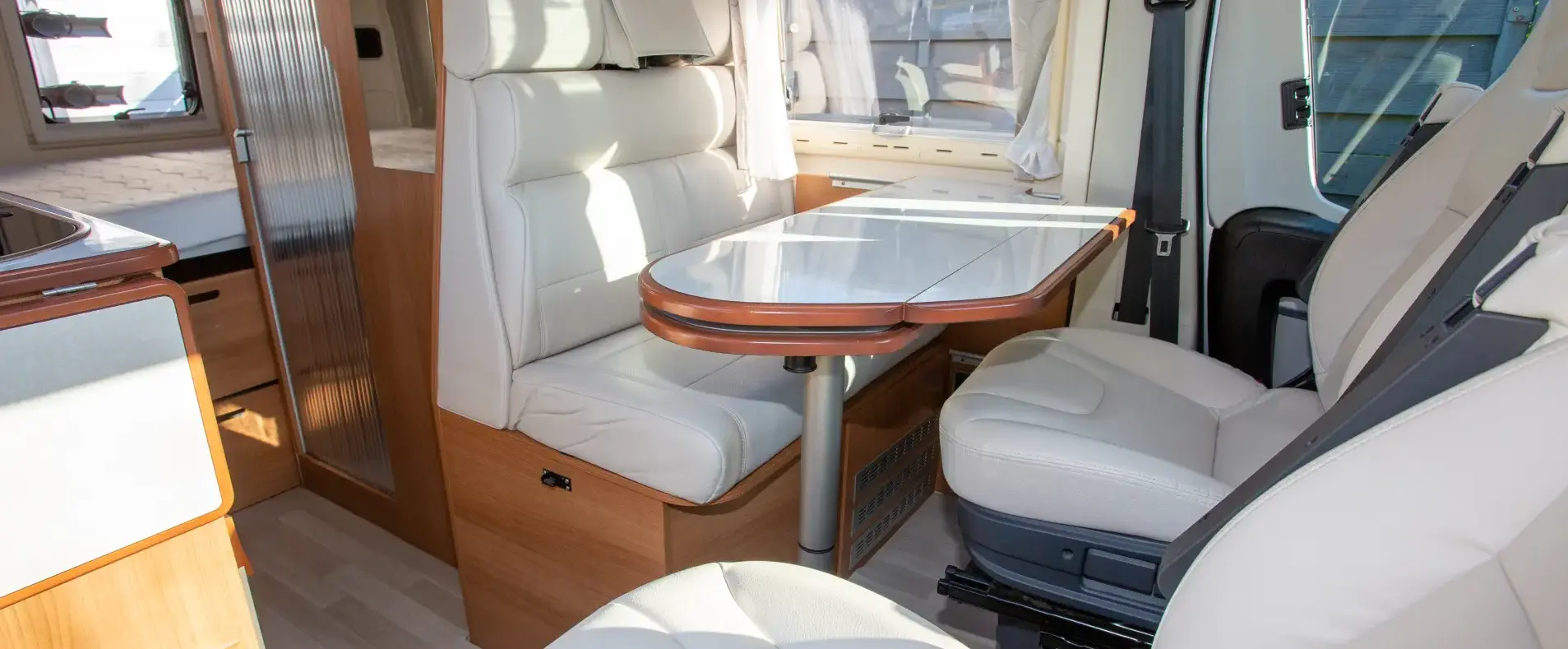Setting a Budget for Your Conversion
Start by deciding how much you are comfortable investing in the conversion. Be completely honest about your current financial situation and always avoid stretching yourself too far. Think about whether you want to fund the project in one go or gradually spread the costs over a period of time. Remember, this is not just about the van itself, but also the materials, labour, tools, and any unexpected costs.
Once you know your overall budget, split it into sections. The van is often the biggest expense, so it is worth shopping around and remembering to factor in MOT, tax, and insurance. After that, you will need to think about materials and fittings such as insulation, flooring, furniture, and appliances. Tools and equipment can also add up quickly if you do not already own them. On top of this, you may need to pay for professional help, such as an electrician, plumber, or mechanic. Legal and safety requirements like gas installation or DVLA reclassification should also be included.
Even the most careful plans can face surprises, so it is wise to build a buffer of at least 10 to 15 percent of your budget. This will cover hidden issues such as rust repairs, wiring changes, or last-minute upgrades. Having this extra safety net will help you continue your project without any major financial setbacks that make carrying on impossible. It also allows you to decide on your priorities. Not everything needs to be bought at once. Focus on the essential features first, such as insulation and a safe bed, and save extras like solar panels or upgraded lighting for later.
Choosing the Right Van for Your Needs
The van you choose will be the foundation of your entire conversion, so it is important to take time to pick the right one. Your choice will shape how much space you have, what features you can include, and how comfortable the van will be for everyday use. It is worth thinking carefully about your lifestyle and travel plans before making a decision.
Start by asking yourself how you aim to use your campervan. If you want a simple weekend escape vehicle, a smaller van might be enough. These are easier to drive, cheaper to run, and can still be fitted with a basic bed, cooking area, and storage. Alternatively, if you plan to live in the van for longer periods or travel across countries, you will need a much larger van with plenty of extra headroom and more space for facilities like a shower, a bigger kitchen, or even workspaces.
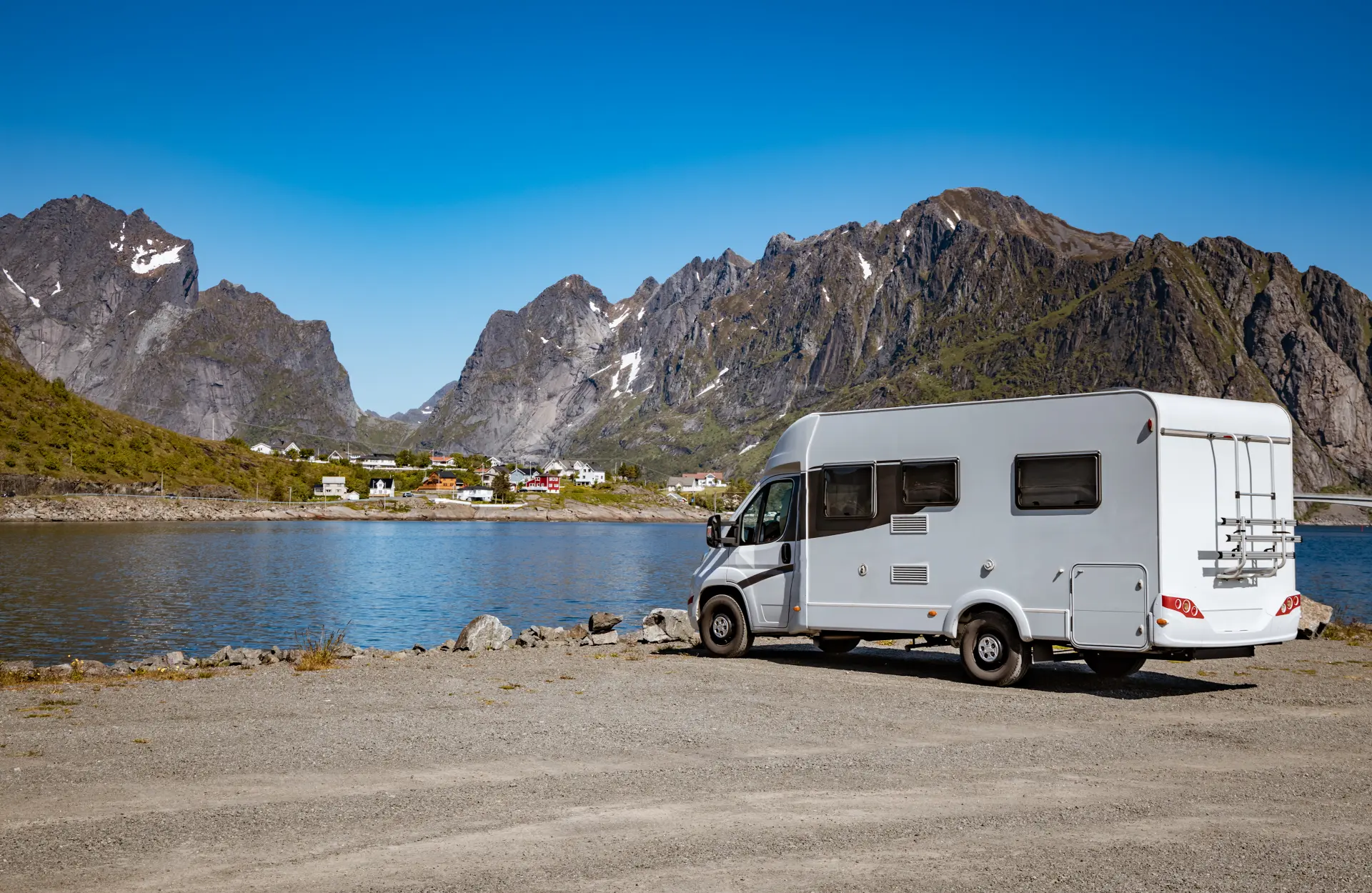
Reliability is another major factor to include or look for. Always look for a van with a full service history and check for clear signs of rust, as these kinds of repairs can be costly. Mileage is equally as important, but a well-maintained van with higher miles can be a much better choice than a poorly cared-for van with lower mileage. It can help to take someone with mechanical knowledge when viewing vans, or pay for a professional inspection before you buy.
Think about running costs as well. Larger vans often use more fuel and can be more expensive to insure, tax, and maintain. Smaller vans are usually more economical but may limit what you can include in your layout. Balancing cost with comfort is an important part of choosing the right van.
Designing the Layout and Interior
The design you choose should reflect both your lifestyle and your budget, so take time to plan before starting any building work. The first step is to think about how you will use the van day to day. For example, if you plan to travel alone or as a couple, you might need less seating but more storage. Families may need extra beds and space to eat together.
Consider whether you want fixed furniture, like a permanent bed, or flexible options, such as seats that fold out into a bed. A fixed layout can be more comfortable, while a flexible layout makes better use of space. Practicality should guide your choices. Every van has limited room, so try to keep the design simple and avoid overcrowding. Think about where to place key areas such as the kitchen, bed, and storage so that the space flows easily. Many people put the bed at the back of the van, with storage underneath, and keep the cooking area close to the sliding door for good ventilation. These small decisions can make the van much easier to live in.
Lighting and airflow are also important. Adding windows, skylights, or roof vents will bring in lots of natural light and fresh air, which makes the van feel larger and more comfortable. Good insulation and heating are worth planning early, as these aspects can make a huge difference when it comes to the colder months. When it comes to style, you can keep things simple or be as creative as you like. Choose colours and materials that feel welcoming and durable, or something that you won't get bored of quickly. Lighter colours tend to make your van look much bigger, whereas wood finishes often add warmth. Storage solutions, such as overhead cupboards or pull-out drawers, are also a good ideas as they help keep the space tidy and organised.
Essential Features to Include
When converting a campervan, it is easy to get carried away with design ideas and extras, but it is the essential features that will make the van safe, comfortable, and practical. These are the items that turn a simple vehicle into a liveable space, so it is worth including them in your plans from the start.
A safe and comfortable sleeping area should be the first priority. Whether you choose a fixed bed or a fold-out option, make sure it provides enough room to sleep well and has proper support. Many people also use the space under the bed for storage, which helps keep the van tidy.
Next is cooking. Even a small kitchen setup can make a huge difference to life on the road. At the very least, you will need a hob and some worktop space. A sink with running water is also very useful, and many conversions include a fridge for food storage. Positioning the kitchen near the door or a window is a good idea for ventilation.
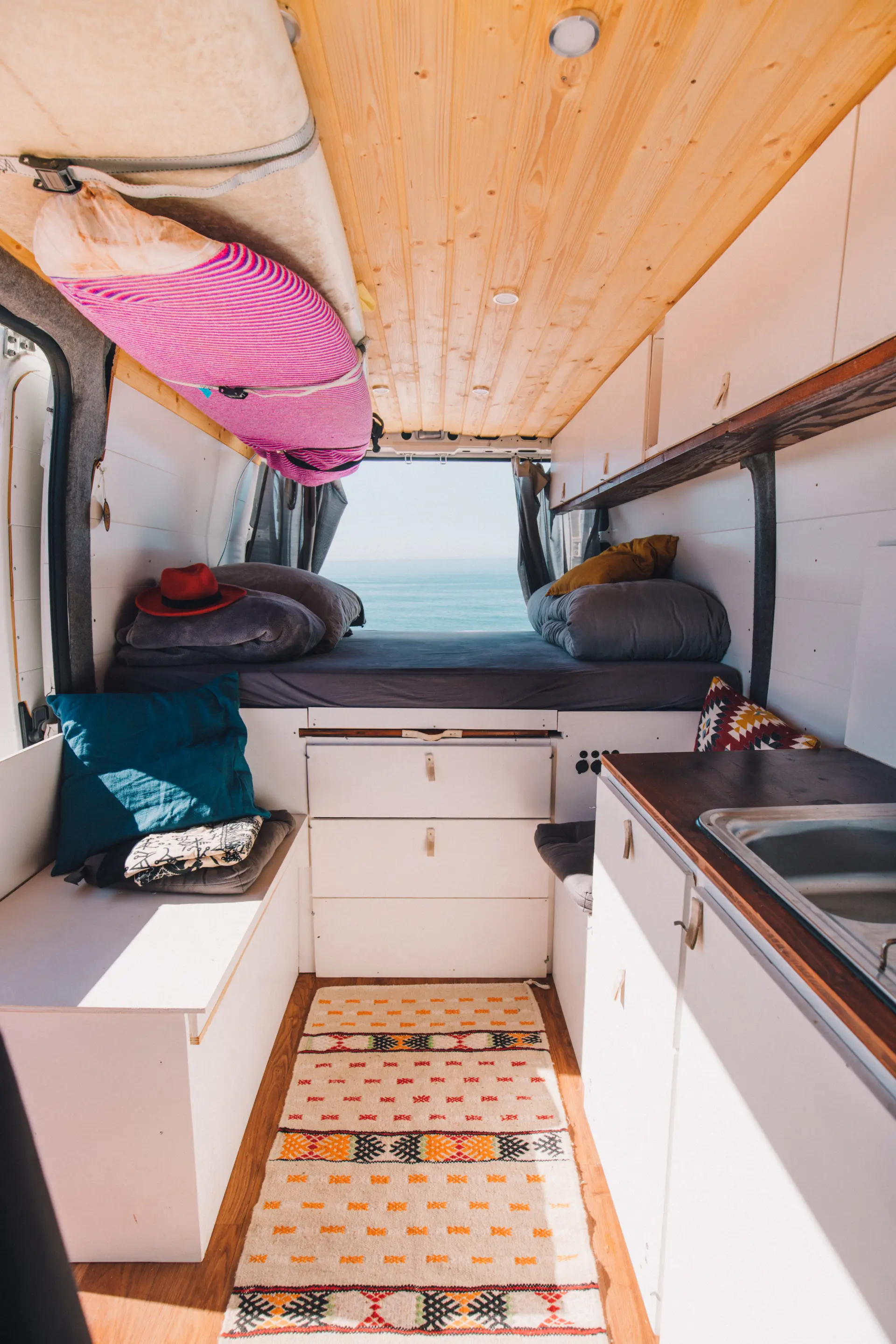
Storage is another feature you cannot do without. Clothes, food, and equipment all take up space, so clever storage solutions will make van life much easier. Overhead cupboards, under-seat drawers, and pull-out units are popular choices. Keeping everything organised will stop the van from feeling cluttered.
Power is also important. A leisure battery, solar panels, or a hook-up point can provide the electricity you need for lighting, charging devices, and running appliances. Even if you do not install everything at once, planning for power early will save you problems later. Ventilation and insulation should not be overlooked. Roof vents, windows, or fans help control airflow and reduce condensation, while insulation keeps the van warm in winter and cool in summer. These features make the van much more comfortable and are worth the effort.
To finish, safety must always come first. Fire extinguishers, carbon monoxide alarms, and safe gas or electrical installations are also necessary features for keeping you and anyone you travel with safe. Investing in safety features at the start gives peace of mind for every t
DIY vs Professional Conversion
One of the biggest decisions you will face when planning a campervan conversion is whether to do the work yourself or hire professionals. Each of the options has its advantages and challenges, and the right choice depends on your budget, skills, and the time you have available.
A DIY conversion can be quite a rewarding experience. It allows you to control all the fine details and design aspects, but it will also save you a great amount of money. Many people enjoy the hands-on process and take a lot of pride in building a space that reflects their personality and tastes. A self-build also gives you the flexibility to spread out costs and work at your own pace. However, it can take a lot of time and effort, especially if you are learning new skills along the way. Mistakes can be costly to fix, and certain jobs, such as electrical wiring or gas fitting, may still need professional help for safety reasons.
On the other hand, choosing a professional conversion offers peace of mind. Skilled converters bring experience and knowledge that can save time and ensure a high-quality finish. They are also familiar with all UK safety regulations and can carry out complex tasks, such as plumbing and electrics, to a certified standard. A professional build can be quicker and may even add value to the van if you plan to sell it later. The main drawback is cost, as professional conversions are usually much more expensive than doing it yourself. Some people tend to opt for a middle ground, handling the parts of the project they feel most confident with and hiring local professionals for some of the more technical jobs. This approach can help balance cost, safety, and personal involvement.
At Autobarn Camper Conversions, our passion lies in crafting bespoke campervan conversions, uniquely tailored to align with your lifestyle needs and preferences. Our dedicated and knowledgeable team are there to lend their expertise at every step of the conversion journey.
